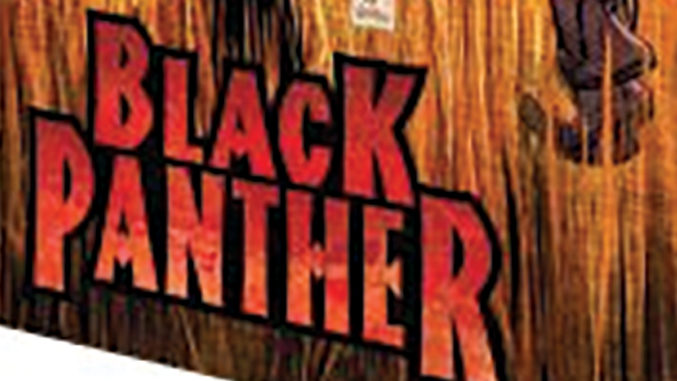
by Jonathan Richardson
On February 16, Black Panther, one of the most anticipated Marvel Studios movies, will drop into theaters. Black Panther is already expected to break all of Marvel Studios’ records for pre-sale tickets, surpassing such movies as both Avengers releases, Guardians of the Galaxy, and Captain America: Civil War. Black Panther actually made his film debut in Civil War, and he was easily many fans favorite character from that film.
So, how about some history for Black Panther before you rush off to his movie?
Black Panther, or T’Challa, was first introduced to the world in 1966, straight off the pages of Marvel Comics’ Fantastic Four #52. Black Panther is the leader and ruler of the fictional country of Wakanda, a majestic land that is located on the continent of Africa. Black Panther protects his country and people with his superior intellect, enhanced physical abilities, martial arts, and, of course, wealth.
Created by Stan Lee and Jack Kirby, Black Panther was the first mainstream superhero of African descent to be featured by a prominent comic publisher. He was introduced three years before the Falcon (1969), five years before Luke Cage (1972), and four years before DC Comics’ Green Lantern John Stewart.
Though they both arrived in the same year, the comic hero Black Panther preceded the Black Panther Party, the organization founded by Bobby Seale and Huey Newton. To try to avoid any confusion or possible links with the socialist organization, Marvel Comics tried to change Black Panther’s name to Black L
eopard in 1972. However, that did not last long at all, and his original moniker was restored and has remained to this day.
As I stated before, he was the first true superhero to be black and appear in a publication by a major American comic book company. There had previously been a character named Lobo who was the first black character to star in his own comic book from Dell Comics Western. He was a cowboy, though, with no real super powers.
For the first two years of his comic book existence, Black Panther mainly wasn’t around too much, as he made a guest appearance in Fantastic Four Annual #5 and then appeared in a few issues of Tales of Suspense with Captain America. In 1968, he joined the immensely popular superhero team the Avengers in issue #52, and he operated as a part of their team for a time, until he got his first shot at a solo story.
After he left the Avengers title, Black Panther moved over to Jungle Action. His first appearance was in issue #5, but that was basically a reprinting of an earlier story in Avengers. Beginning with Jungle Action #6, Black Panther finally received his first starring role in a comic book with original material. His first original story arc ran from issue #6 to #18, which took roughly two years to complete, and this was what some consider to be one of Marvel Comics’ first graphic novels. Titled Panther’s Rage, a
revolution against T’Challa has come to Wakanda and Black Panther returns home to deal with it. That arc received high praise for its two years of telling one specific story, which many comics were not doing at the time.
After that arc wrapped up, issue #19 started a new story titled Panther vs. Klan. As you might imagine, throwing the Ku Klux Klan into a comic book at that time could be considered contentious, and it did cause some debate and unease in the Marvel offices.
Finally, in January of 1977, the Black Panther received his own comic series. It only lasted 15 issues over two and half years, which some in the comic world might see as a failure for your own first series. However, through the decades Black Panther’s popularity has only increased. There has been no shortage of Black Panther comics, stories, and appearances in just about every Marvel comic.
It wasn’t until his film introduction in the 2016 movie Captain America: Civil War that Black Panther’s popularity really began to soar. He was not the first black superhero to appear on film, however, as that honor probably goes to Meteor Man from the not-even-cult-classic film Meteor Man. He is not even the first black Marvel superhero to appear on film, as that honor goes to Wesley Snipes’ Blade from the Blade movies of the late 90s.
After his appearance in Civil War, Black Panther got another shot at his own comic series, but this time with the creative team of writer Ta-Nehisi Coates and artist Brain Stelfreeze. This series easily became one of the biggest selling books in 2016 and continues to do well.
Black Panther doesn’t just show up in movies and comics; he can also be found in multiple video games, action figures, and animated series.
If you want to read some of his comics or find any of the Black Panther merchandise that is out there, just visit a local comic book/toy/movie store like The Great Escape to fulfill your desires!




